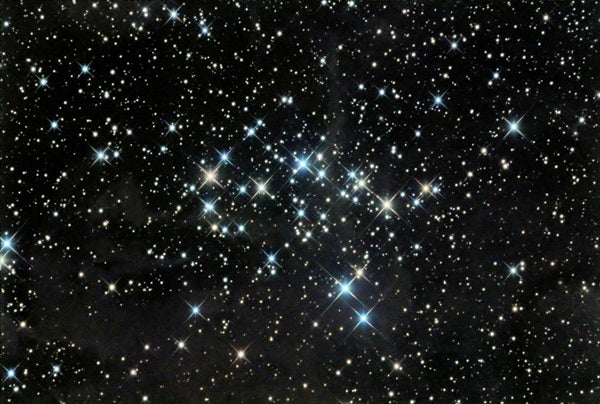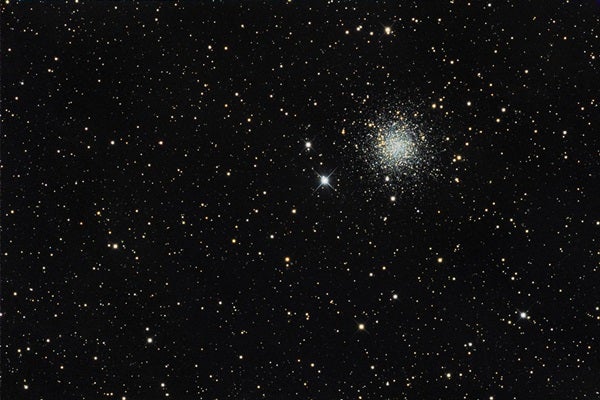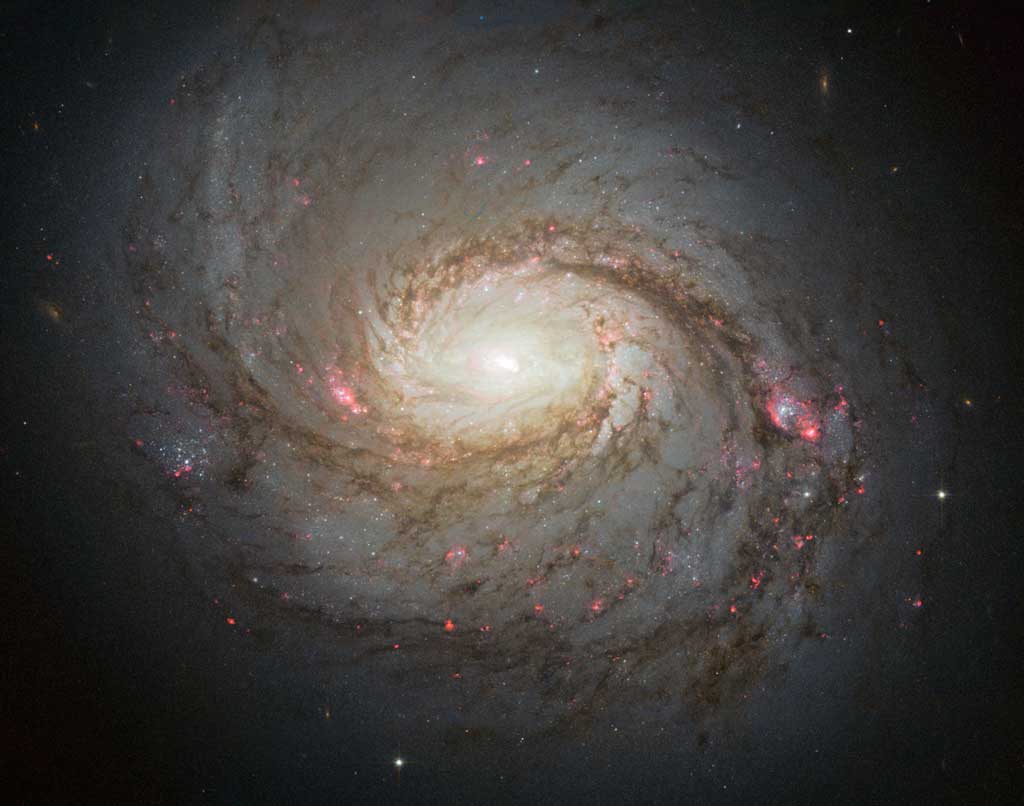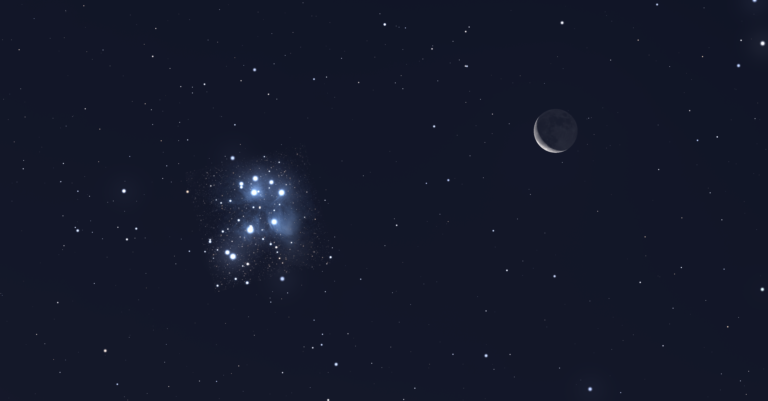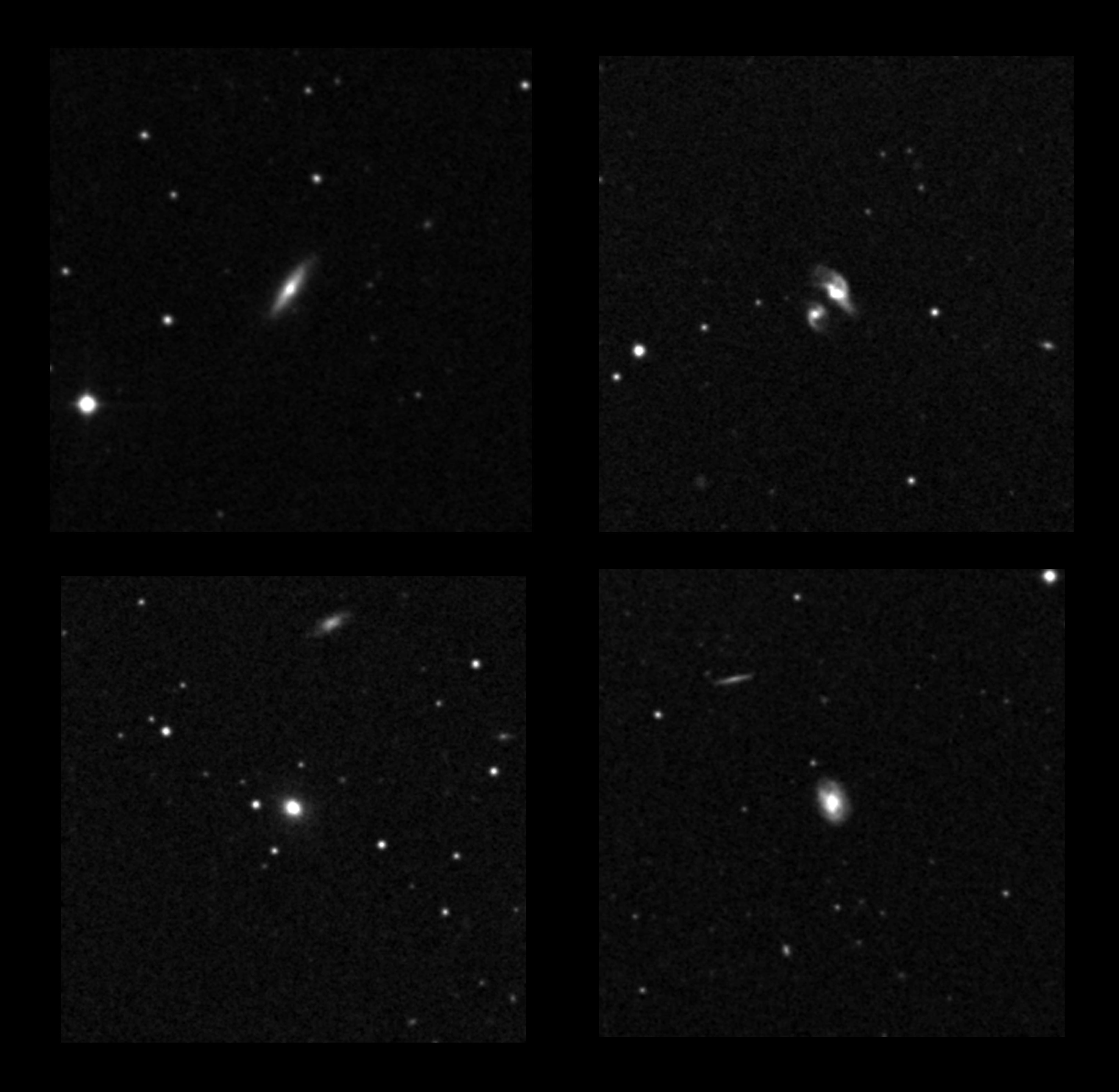We kick off our exploration with Delta (δ) Cephei, the prototype of a class of yellow supergiant variable stars known as Cepheid variables. Over the course of 5.366 days, Delta physically expands and contracts, brightening to magnitude 3.5 and then dimming to magnitude 4.4.
Astronomers studying Cepheids a century ago discovered that their periods correspond directly to their inherent luminosities. This fact allows scientists to determine their distances accurately. Edwin Hubble’s subsequent discovery of Cepheids in the Andromeda “Nebula” (M31) proved that the universe is made up of individual galaxies separated by vast empty distances.
Our next target, open cluster M103, lies in neighboring Cassiopeia. This constellation contains many such objects for binoculars, making it one of my favorite regions of the fall sky. French astronomer Pierre Méchain discovered M103 back in 1781, but it got its designation when Charles Messier included it as the final object in his original catalog just prior to publication. (Astronomers later added M104 through M109 from Messier’s unpublished notes.)
Most binoculars show M103 as a small arrowhead of faint stars nestled to the northeast of magnitude 2.7 Delta Cassiopeiae. The brightest star in the arrowhead, at the tip, is blue-white Struve 131, a pretty triple star through telescopes.
Staying in Cassiopeia, if you draw a line between Caph (Beta [β] Cas) and Cih (Gamma [γ] Cas) and aim exactly halfway in between, you will find the magnitude 5.9 star SAO 21457. Glance just to its north. See a tiny smudge? That’s open cluster NGC 129, which shines at 7th magnitude and holds some three dozen stars in its grip. My 10×50 binoculars show a small, featureless glow, while my 16x70s reveal five dim points peeking back at me.
Marching into Perseus, we next come to the second entry in a catalog of open star clusters published in 1930 by Robert Trumpler, who worked at Lick Observatory in California. Trumpler 2 lies about 2° west of magnitude 3.8 Eta (η) Persei at the constellation’s northern tip. About half of the 20 blue and white stars that form the group are bright enough to see through 7x binoculars.
You’ll find Trumpler’s next cataloged cluster back in Cassiopeia. Lying about 9° due east of Epsilon (ε) Cas in the W asterism, Trumpler 3 appears as a hazy grouping of five faint bluish-white stars. Dim stellar points litter the entire region, creating a marvelous sight under dark skies. Be especially watchful for a pretty arc of stars just north of Trumpler 3.
Our next object, open cluster NGC 1342, takes us back to Perseus one last time. It resides halfway between magnitude 3.4 Rho (ρ) Per and magnitude 4.0 Menkib (Xi [ξ] Per). With my 10×50 binoculars, I can spy an irregular patch of celestial mist, but only a couple of the dozens of stars within this open cluster are bright enough to peek back. If your binoculars have a magnification of 14x or more, look for two triangular patterns of stars within NGC 1342, one toward the northeastern edge and the other near the western border.
This object lies in the ultra-faint constellation Camelopardalis, but the easiest way to find it is to look 5.3° northeast of Eta Persei. Through binoculars, Stock 23 stands out nicely. Of its 25 obvious stars, the four brightest form a trapezoid that reminds me of a tiny version of Draco’s head.
Let’s head far to the south next, to Aquarius the Water-bearer. There you’ll find M72, the faintest of the 29 globular clusters listed in Messier’s catalog. I can make it out through 10×50 binoculars as a small blur of light about 3° south of magnitude 4.7 Mu (μ) Aquarii. Larger binoculars help make this distant swarm of 100,000 stars more obvious, but the suns themselves remain unresolved.
While we’re in this area, try your luck on M73, which you’ll find 1.3° farther east — not that there’s much to look at. M73 is a Y-shaped pattern of four stars that range in brightness from 10th to 12th magnitude. Even 16x70s show only a faint fuzz.
Whether or not these stars are physically related or simply a chance alignment is still under debate. Some astronomers think that we’re seeing the remnant of a scattered open cluster, while others remain unconvinced. Time will tell.
Let’s conclude with a rather challenging target through small binoculars, M77 in Cetus. Although it glows at only 9th magnitude, this galaxy is relatively easy to zero in on through lenses larger than 50 millimeters. It forms a right triangle with the magnitude 4.1 star Delta Ceti and the magnitude 5.7 sun 84 Ceti. Specifically, it lies 0.9° east-southeast of Delta.
M77 looks like a dim oval glow. This galaxy is the prototypical Seyfert galaxy, a family of spirals whose cores are erupting, likely due to supermassive black holes with voracious appetites. Astronomers believe the black hole at the center of M77 contains about 15 million times the mass of our Sun.
On the next clear night, try your luck with some of these autumn binocular wonders. As you do, be sure to pause and consider what may be going on behind the scenes. The universe appears peaceful at a glance, but that seeming serenity often is a misconception. And of course, whenever you scan the sky, always remember that two eyes are better than one.

